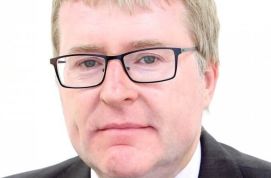Ambitious recovery plan ‘needs staff’
Delivery plan for tackling the Covid-19 backlog of elective care – the NHS and government plan to invest the additional revenue earmarked for reducing the elective care backlog over the next three years – sets out the means and the targets to deliver its aims.
It confirmed that £8bn in revenue and £5.9bn in capital over three years have been earmarked for delivery of the plan. The capital funding will be used to build new surgical hubs, increase bed capacity and provide equipment (£1.5bn). There will be £2.1bn for digital modernisation, including cyber security and data analysis to redesign patient pathways. And £2.3bn will target increased activity to reduce diagnostic and elective waiting times, with an aim to open at least 100 community diagnostic centres by the end of 2024/25.
It is unclear how the funding will be allocated – the plan said the funds would be distributed in a way that maximised its impact.
The document added that the payment mechanism would incentivise strong performance and value for money, based on establishing the lowest risk and the most effective incentives to increase activity.
The payment mechanism for 2022/23 will be based on the aligned payment and incentives (API) approach, which includes fixed and variable elements, subject to the outcome of a consultation. The consultation on the payment mechanism, which closed at the end of January, said the fixed element would include payment for elective backlog work.
It added that the variable element will replace the elective recovery fund used in 2021, and would include payment at 75% of national or unit prices for elective activity over the agreed baseline (50% in 2021/22). Activity below the baseline would be deducted at 50% of national or unit prices.
Providers and commissioners that wish to alter this default variable element design, would need approval from NHS England and NHS Improvement, and demonstrate how their alternative approach would address the elective backlog and quality of care.
Waiting list goals
The elective recovery plan includes a number of waiting list goals:
- To end waits of more than two years by this July, to eliminate waits of over 18 months by April 2023, and those of more than one year by March 2025
- To return the proportion of patients starting their cancer treatment within 62 days of referral to pre-pandemic levels by March 2023
- To give at least 75% of people with an urgent cancer referral their diagnosis within 28 days, by March 2024
- To ensure at least 95% of patients waiting for a diagnostic test receive the test within six weeks by March 2025.
The plan sets out how these targets will be achieved – through separating elective and urgent care and increasing capacity; prioritising diagnosis and treatment for those with suspected cancer or other urgent condition, and offering alternative providers for those with a long waiting time; transforming delivery of elective care, including streamlined care, fewer cancellations, and more convenient access to diagnosis and surgery; and better information to support patients, improving outcomes and reducing inequalities in health outcomes.
NHS chief executive Amanda Pritchard said addressing the elective backlog would not happen overnight. But she added: ‘We are determined to make the best possible use of the additional investment and take the best from our pandemic response, including smarter use of digital care and flexible working between teams and trusts, while building this additional diagnostic capacity that will help to accelerate progress.’
Though there was no explicit workforce plan, the elective care document recognised that further work is needed to train, recruit and retain staff. It added: ‘Delivering elective recovery will require not just more new staff, but more opportunities for current staff and those returning to practice to work flexibly and remotely, and to develop new skills to progress in their careers.’
However, King’s Fund chief executive Richard Murray (pictured) said: ‘This is a welcome plan, but the NHS will need more staff to make it a reality.
‘Without enough clinical staff these targets will remain aspirational numbers in a plan rather than real change for patients. For many years the NHS has been hamstrung by chronic staff shortages, and today’s plan is a long way short of providing a comprehensive solution. To tackle the staffing crisis, government must move beyond repeating manifesto pledges and instead come forward with a fully funded workforce strategy.’
A letter from NHS England and NHS Improvement said the plan aimed to fulfil the ambition of increasing elective activity by around 30% by 2024/25.
It added that mental health, primary and community care should be given the same focus as elective activity. NHS Providers insisted the NHS must be ‘supported and resourced’ to address worrying delays in mental healthcare and community services.
Its deputy chief executive Saffron Cordery added: ‘The inclusion of a series of very stretching targets, which will sit alongside existing clinical standards for urgent and emergency care, mental health, cancer and planned care, bring renewed focus to a range of services.
‘Trust leaders will be going flat out to meet the challenges presented by long waits but we need to have the staff in place to achieve all of these ambitions. Workforce shortages and the resulting unsustainable workloads on existing staff, are the biggest challenges facing trusts right now. We need urgent national action to tackle this.’
Related content
The Institute’s annual costing conference provides the NHS with the latest developments and guidance in NHS costing.
The value masterclass shares examples of organisations and systems that have pursued a value-driven approach and the results they have achieved.